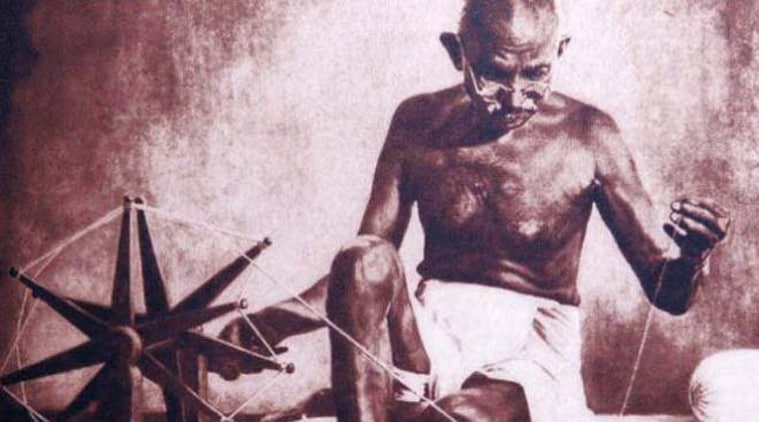The state of Khadi, the fabric that united India
With the mainstreaming of khadi and the focus of various government agencies on promoting the fabric, we can rest easy that khadi is going nowhere, it is just moving and adapting with the times.

Mahatma Gandhi called for the boycott of foreign goods and instead asked people to embrace the charkha and produce handwoven fabric from handspun yarn. (Source: File photo)
Gone are the days when Khadi was a coarse, rough material – which while representing all that was pure and virtuous about India – worn primarily by politicians. Today, Khadi or khaddar has a more refined weave and while it is still handwoven and handspun, it has now found favour with the fashion-conscious and the youth. Khadi is India’s homespun answer to linen.
Khadi was popularised during the Swadeshi movement from 1905 to 1911. Mahatma Gandhi had called for the boycott of foreign goods and asked people to embrace the charkha and produce handwoven fabric from handspun yarn. This move was meant to make every home self-sufficient through local production, instill a sense of unity among Indians and create employment opportunities in rural areas.
The Khadi and Village Industries Commission (KVIC) that was established by an Act of Parliament in 1956, for the sole purpose of promoting the fabric and creating opportunities extends to the whole of India except the state of Jammu and Kashmir. The KVIC is supposed to “plan, promote, facilitate, organise and assist in the establishment and development of khadi and village industries in the rural areas in coordination with other agencies engaged in rural development wherever necessary”. To ensure that no fake products were being sold in the name of khadi, on July 22, 2013, The Khadi Mark Regulations 2013 was introduced to help screen products. These regulations required institutions or people to sell, trade or produce khadi products bearing the “Khadi Mark Tags and Labels” issued by the KVIC, after they had applied for Khadi Mark registration and have cleared the sample tests.
A few months back, the Ministry of Commerce and Industry started chalking out strategies for positioning khadi as an exclusive Indian brand across the world. A brand which only the Khadi and Village Industries Commission (KVIC) is entitled to promote or claim as its own.
Efforts to Save the Fabric of the Nation
A lot has been said and done to save and promote what can well be called the fabric of the nation. In May 2016, a khadi uniform was proposed for Air India’s cabin crew by their internal committee. It was also recommended that all the bedsheets and upholstery in ITDC hotels would be made from khadi. A couple of months back, the Fashion Design Council of India (FDCI), presented ‘Khadi – Transcending Boundaries’, which saw leading fashion designers such as Rohit Bal, Anju Modi, Payal Jain and Poonam Bhagat pay homage to the fabric.
Over the years, we have seen designers such as Nachiket Barve using khadi extensively. Anju Modi is another designer known for using zari and thread-work embroideries and gold foiling on khadi to add some razzle dazzle to the fabric. Reynu Tandon has been working with khadi since the last nine years. Labels like 11.11/eleven eleven and Akaaro by Gaurav Jai Gupta celebrate the fabric beautifully.
Prime Minister Narendra Modi has also been a strong campaigner with his slogan, “Azaadi Se Pehle, Khadi for Nation; Azaadi Ke Baad, Khadi For Fashion”.
With the mainstreaming of khadi and the focus of various government agencies on promoting the fabric, we can rest easy that khadi is going nowhere, it is just moving and adapting with the times. Becoming more contemporary and versatile to fit the needs of the modern Indian. It’s safe to say that the state of at least the literal fabric of India would have made the Mahatma proud.
Fun fact
Contrary to popular belief, khadi is also produced from silk and wool. The KVIC Act defines khadi as “any cloth woven on handlooms in India from cotton, silk or woolen yarn handspun in India or from a mixture of any two or all of such yarns”.






















No hay comentarios:
Publicar un comentario